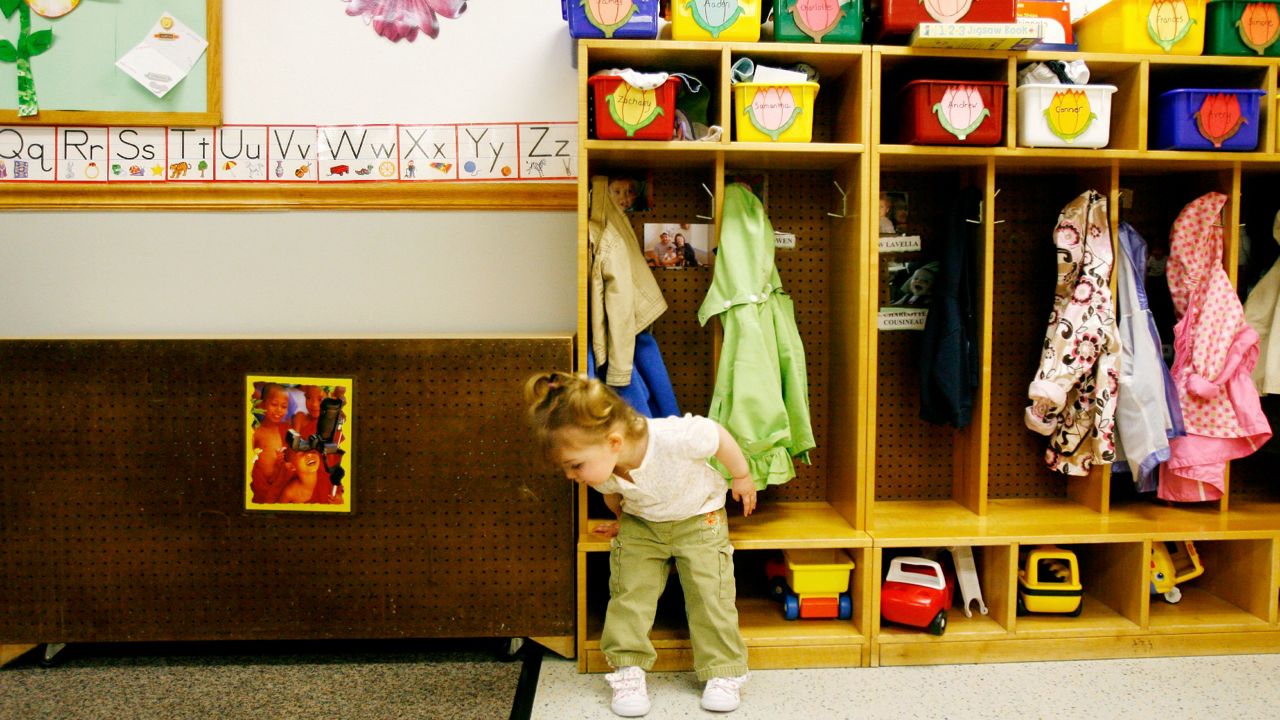WISCONSIN — The average annual cost of child care in Wisconsin can be more expensive than college, according to the latest Wisconsin Policy Forum report.
What You Need To Know
- Annual costs for child care in Wisconsin can be more expensive than college
- Data from the Department of Children and Families’ 2022 Child Care Market Rate Survey showed that in Milwaukee County, the average annual child care cost for a 4-year-old is $12,142
- These costs exceed federal recommendations, which state that no more than 7% of a household’s income should go toward child care
- Gov. Tony Evers, during his latest budget address, called for $340 million toward child care programs
Data from the Department of Children and Families’ 2022 Child Care Market Rate Survey showed that in Milwaukee County, the average annual child care cost for a 4-year-old is $12,142; for an infant, it’s $16,236.
Comparably, the annual tuition cost at the University of Wisconsin-Madison from 2022 to 2023 was $9,273.
These child care costs exceed federal recommendations, which state that no more than 7% of a household’s income should go toward care.
In Milwaukee County, 22.2% of the 2021 annual median household income went toward care for a four-year-old. That percentage is even higher for care of an infant.
Even though Wisconsin provides supports for qualifying families to help cover a portion of their cost, officials found that still wasn’t enough.
For example, the report looked at a Milwaukee County family with two children, one an infant and the other a 4-year-old, with a median household of around $54,793. The children in this example receive care at a two-star center (meaning it meets health and safety standards) that charges an average tuition rate for Milwaukee County.
Without help, the cost for that care per month would be $2,248, equating to 49.2% of the family’s monthly income.
The family, although barely, qualifies for the Wisconsin Shares Child Care Subsidy Program.
With this help, they’d pay a minimum of $395 a month, or 8.7% of their monthly income. While this percentage is much lower, it’s still above the federal recommendation of 7%.
The family of four in the example, however, is only about $700 shy of having too high of a median household income to qualify for the program. If they earn more than $55,500, their subsidy would significantly decrease despite remaining financially eligible for the assistance. As such, there are many families who may not even qualify for the Wisconsin Shares program based on their income. In this case, they’d be responsible for the full amount.
Policy officials said these high costs may become a larger burden for employers in the state.
“At a certain point, when the cost of child care gets too high or combines with other considerations, a family may choose to keep an adult at home as a caretaker, essentially sacrificing wages and career opportunities for the sake of eliminating child care costs and meeting other goal,” said officials in the report.
Despite these high costs, child care workers are also struggling to earn a living wage. Lead educators in Milwaukee County early an average annual salary of only $24,981, which is equivalent to about $12.01 an hour, according to Wisconsin Policy Forum.
Even with low wages and high costs, Wisconsin Policy Forum officials said many centers will still see a low annual net revenue, which is the difference between the money being brought in and center expenses.
The reason for this is low staff-to-child ratios. Wisconsin’s state law dictates that each adult can only be responsible for a maximum number of children. As the age of the children rises, so does the maximum number that can be watched by one adult.
For example, one single adult can supervise 13 4-year-olds but only four infants.
These ratios, according to officials, mean that centers “must invest heavily in staffing.” Revenue from tuition then can only go so far after it needs to be split among staff member for pay. That also explains the lack of high net revenue for centers.
In Wisconsin Policy Forum’s model, they found that about half of center expenses went toward personnel, including wages, benefits, training fees and more. The rest went toward expenses like food and kitchen supplies, rent, maintenance and more.
The burden of these costs only increased for centers earning a five-star rating, which is the highest in the official YoungStar rating scale.
Wisconsin Policy Forum estimated that salary costs for a five-star center were 68.7% higher than the two-star center. Tuition was also more expensive, rising by 21.3%.
It’s easy to see how this increase would further strain families’ bank accounts. Without assistance, the same two-child, two-parent family referenced earlier would pay $2,717 per month for care at this facility, or 59.9% of its monthly income.
Rising costs are also coupled with the end of the Child Care Counts program, which was launched in 2020 to drive federal funds toward supplementing licensed child care. Those dollars will run out in December if lawmakers decide to not use funds to continue support of the program.
Gov. Tony Evers, during his latest budget address, called for $340 million toward child care programs.
Wisconsin Policy Forum said including this money in the budget may be the best way to combat costs.
“Given the state’s sizable budget surplus and overall sound financial health, the upcoming two-year budget offers the best opportunity in decades to ensure that high-quality, affordable early childhood care and education is available for all Wisconsin residents,” said officials.
Editor's Note: A previous version of this article had an incorrect amount of money Gov. Evers' budget proposal would allocate towards child care programs. The error has been corrected. (May 22, 2023)



